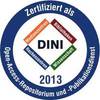English Title: Impact of COVID-19 Lockdown on HOx Chemistry in the Upper TroposphereImpact of COVID-19 Lockdown on HOx Chemistry in the Upper Troposphere
Preview |
PDF, English
Download (46MB) | Terms of use |
Abstract
Das Hydroxylradikal (OH) ist das prim¨are Oxidationsmittel in der Atmosph¨are und spielt eine entscheidende Rolle bei der Beseitigung von Schadstoffen wie Kohlenmonoxid (CO), Treibhausgasen wie Methan (CH4) und fl¨ uchtigen organischen Verbindungen (VOC), die als Vorl¨aufer des troposph¨arischen Ozons dienen. Im Fr ¨ uhjahr 2020 f ¨ uhrten die COVID-19- Pandemie und die anschließenden Abriegelungen zu einer erheblichen Verringerung der Emissionen aus dem boden- und luftgest ¨ utzten Verkehr und aus der Industrie. Dies ergab die einzigartige Gelegenheit die resultierenden Ver¨anderungen in der atmosph¨arischen Zusammensetzung zu untersuchen. Im Rahmen der BLUESKY Kampagne wurde auf dem Forschungsflugzeug HALO mit 14 verschiedenen Messinstrumenten Spurengase, Aerosole und meteorologische Parameter gemessen. Die OH- und HO2-Konzentrationen wurden mit dem auf LIF-FAGE (Laser-Induced Fluorescence - Fluorescence Assay by Gas Expansion) basierenden HORUS-Instrument gemessen. Das Instrument wurde mit dem All Pressure Altitude-based Calibrator for HOx Experimentation (APACHE) kalibriert, der gegen ¨ uber der vorherigen Version verbessert wurde. Die Gesamtmessunsicherheit f ¨ ur OH und HO2 im 1σ-Intervall betr¨agt 30% bzw. 32%.Die gemessenen OH- und HO2-Daten, konnten dem Box Modell CAABA/MECCA mit einer hohen Konsistenz und U¨ bereinstimmung von 80-90% reproduziert werden. In der oberen Troposph¨are wurde ein durchschnittliches OH-Mischungsverh¨altnis von 0,042±0,02 (1σ) pptv gemessen, w¨ahrend das HO2-Mischungsverh¨altnis bei 21±5 (1σ) pptv lag. Die Messdaten der BLUESKY-Kampagne wurden mit einer anderen Kampagne namens HOOVER II verglichen, um die Auswirkungen der COVID-19-Abriegelung auf die Atmosph¨are zu untersuchen. Der Vergleich ergab, dass die OH-Produktionw¨ahrend des BLUESKY-Zeitraums in der oberen Troposph¨are oberhalb von 7 km umdas 2-6 fache abnahm. Dieser signifikante R¨uckgang war in erster Linie auf verringerte NO-Konzentrationen zur ¨ uckzuf ¨ uhren, die sich aus dem verringerten Flugverkehr ergaben, aber auch auf meteorologische Effekte. Dieser R¨uckgang der OH-Produktion w¨ahrend BLUESKY im Vergleich zu HOOVER II beeintr¨achtigte die OH-Recycling-Effizienz um 30 - 60% und verringerte die Methanoxidationsraten in der oberen Troposph¨are um 50 - 60%. Diese Ergebnisse deuten auf ein m¨ogliches zuk¨ unftiges Szenario hin, in dem die Senkung der NOx-Konzentrationen in der oberen Troposph¨are als Teil von Klimaschutzpl¨anen vorgesehen ist.
Translation of abstract (English)
The hydroxyl radical (OH) is the primary oxidizing agent in the atmosphere and plays a crucial role in initiating the removal of pollutants like carbon monoxide (CO), greenhouse gases like methane (CH4) and volatile organic compounds (VOCs), which serve as a precursor to tropospheric ozone. In the spring of 2020, the COVID-19 pandemic and lockdowns caused a drastic reduction in emissions from transportation and industry. This provided a unique opportunity for the airborne BLUESKY campaign to investigate these reductions and their impact on atmospheric chemistry, particularly changes in the oxidation capacity in the upper troposphere. High Altitude Long Range (HALO) aircraft equipped with 14 different instruments measured trace gases, aerosols, and meteorological parameters. OH and HO2 concentrations were measured using the Laser-Induced Fluorescence – Fluorescence Assay by Gas Expansion (LIF-FAGE) based HORUS instrument. The instrument was calibrated using the All Pressure Altitude-based Calibrator for HOx Experimentation (APACHE) with improvements from the previous version. The total measurement uncertainty for OH and HO2 at 1σ interval is 30% and 32%, respectively. The measured OH and HO2 data, compared with the steady-state CAABA MECCA box model, showed a high correlation of more than 90% and 80% respectively. In the upper troposphere, the average OH mixing ratio was recorded at 0.042±0.02 (1σ) pptv, while the HO2 mixing ratio stood at 21±5 (1σ) pptv. The measured data from the BLUESKY campaign was compared against another campaign named HOOVER II in order to study the effect of the COVID-19 lockdown on the atmosphere. The comparison indicated a 2- 6 fold reduction in OH production during the BLUESKY period in the upper troposphere above 7 km. This significant decline primarily stemmed from decreased NO levels resulting from reduced air traffic and also due to metrological effects. This decline in OH production during BLUESKY compared to HOOVER II affected OH recycling efficiency by 30 - 60% and reduced the methane oxidation rates in the upper troposphere by 50 - 60%. These findings point to a possible future scenario where lowering NOx concentrations in the upper troposphere as part of climate action plans.
| Document type: | Dissertation |
|---|---|
| Supervisor: | Butz, Prof. Dr. Andre |
| Place of Publication: | Heidelberg |
| Date of thesis defense: | 30 October 2024 |
| Date Deposited: | 21 Nov 2024 09:05 |
| Date: | 2024 |
| Faculties / Institutes: | The Faculty of Physics and Astronomy > Institute of Environmental Physics |
| DDC-classification: | 530 Physics |









